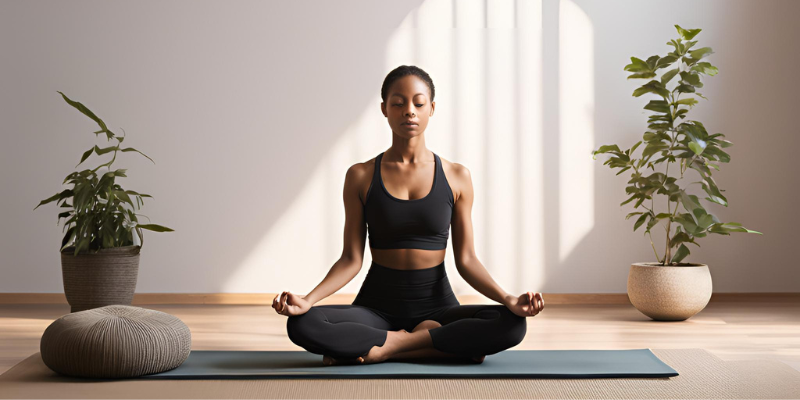The meditation is very well known to be extremely therapeutic for mental and emotional health, it is hard to love what you don't like. Some people are bored to death by meditation, while others are so full of energy that they cannot sit still, and most just don't have a thing about meditating. What if you were one of those people who detested meditating? Well, don't worry because you are not alone in this, though you'd be surprised by how it can get easy and even enjoyable once done the right way. In this article, we will be teaching you how to start practicing meditation giving you practical tips on how to soften your way into the process so that it's more accessible, more enjoyable, and in tune with your tastes.
Why do people find meditation unappealing?
Before diving into the "how," exploring why meditation might feel unappealing is useful. Understanding your resistance can sometimes be the first step toward getting over it. Here are a few common reasons people hate meditation:
- It's dull: Sitting in silence is hard for those whose lives are filled with constant stimulation.
- Restless thoughts: Many of us have an overactive mind while meditating, making the practice maddening.
- Uncomfortable sitting postures: Sitting for long requires discipline for people who enjoy moving.
- No instant result: Rewards from meditation are gained with time; however, the lack of immediate results will make an individual impatient.

Easy Access to Meditation
You do not have to start by sitting in silent, lengthy sessions. These are some easy-access methods to get started with the meditation habit:
- Start Small: Start with 2-5 minutes. You don't need to meditate for 30 minutes at the beginning. This will make it more achievable when you first begin.
- Build consistency, taking it day by day: It is better to meditate daily in short bits rather than in long, non-recurring stretches.
- Guided Meditation: Listen to meditation apps or YouTube videos. Guided meditations will give you structure, which you may need when you are first starting out.
- Theme focus: Whether it's mindfulness, stress reduction, or sleep, find guided programs that share your goals
- Consider walking meditation. If you don't enjoy sitting silently, it can be a fantastic way to add movement to mindfulness.
- Yoga or Tai Chi: These both marry physical movement with mental focus and may be more enjoyable for some people
- Listen to soothing music: Meditation is not necessarily silent. Music or the sounds of nature can help one calm down and focus.
- Try sound baths. They're a meditative experience with soothing sounds from singing bowls, chimes, etc., which enhance the relaxation stage.
- Basic breathing exercises: Concentrated breathing is one of the most essential practices for meditation beginners. Just breathe in and out deeply while noticing the feeling of your breath.
- Count your breaths: For more concentration, count every inhalation and exhalation. This will also silence your mind, letting you be mindful.
Common Meditation Struggles and How to Overcome Them
With basic techniques, you are bound to face various struggles, too. Here's how to overcome some of the common mediation challenges:
- Managing a Busy Mind: Become aware of your thoughts. Your mind will wander. Avoid resisting it; learn to accept the thoughts, and then try to ease your attention back onto your breath or the chosen object of meditation.
- Develop tolerance: Your mind will calm down. Meditation isn't about the total elimination of thoughts but about gaining control over the stormy waters of your mind.
- Sit comfortably: You need not sit cross-legged. You can meditate in a chair, lying down, or even with back support.
- Stretch before meditation: Gentle stretches may help avoid discomfort and encourage your body to relax.
- Small goals: Begin with shorter meditation sessions and gradually spend more time meditating as you grow comfortable. It helps to reward yourself for maintaining practice.
- Notice even slight changes, if any, in your mood, ability to focus, or relaxation following meditation practice. Minor improvements can be very motivating.

The Various Forms of Mediation
Not all mediation has to be quiet. Meditation does not simply involve sitting silently. These are some of the variations of mediation that might appeal to you more:
- Practicing Mindful Eating: Focus on sensory experience while eating or mastication-taste, smell, and feel. This technique involves mindfulness and not necessarily a complete meditation session.
- Creative meditation: Color, knit, garden, or undertake any relaxing activity. They place you in a meditative mode because you are focused on the present.
- Journaling: Writing down your thoughts and feelings is, in essence, meditation, a way to clear your mind and gain insight into your mental state.
- To maintain a sustainable practice, the characteristics of your meditation practice should fit your lifestyle and preferences. Here are some further tips to keep you on track:
- Find your correct time: Some people prefer to meditate in the morning, while others may like to unwind after work in the evening. Experiment until you find what works best for you.
- Create an atmosphere for peace: You simply need to identify a location in which you can meditateit should be peaceful and inviting. It might involve a comfortable chair and candle, or it can be rather elaborate, with cushions and incense.
- Be kind to yourself: Meditation is a personal journey, and it's no problem if you miss a day or find it difficult initially. You should still keep coming back to the practice.
Conclusion:
Not necessarily is it a meditation guru that gets you started. Start small and easy and practice the varieties until you find what works best for you. Be it a short stillness, guided meditations, or even mindful movement- there is always a way to fit it into your lifestyle. Be patient and open to experimenting and you will soon find out what perfect mediation practice feels like for your welfare.







